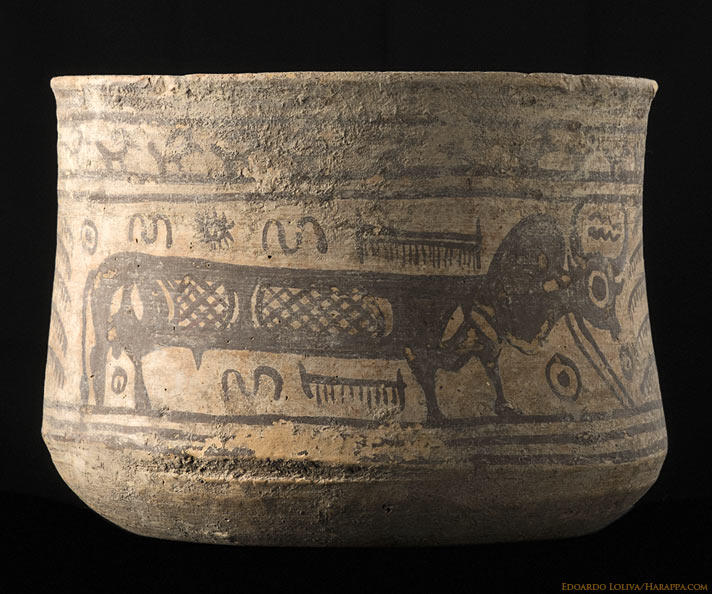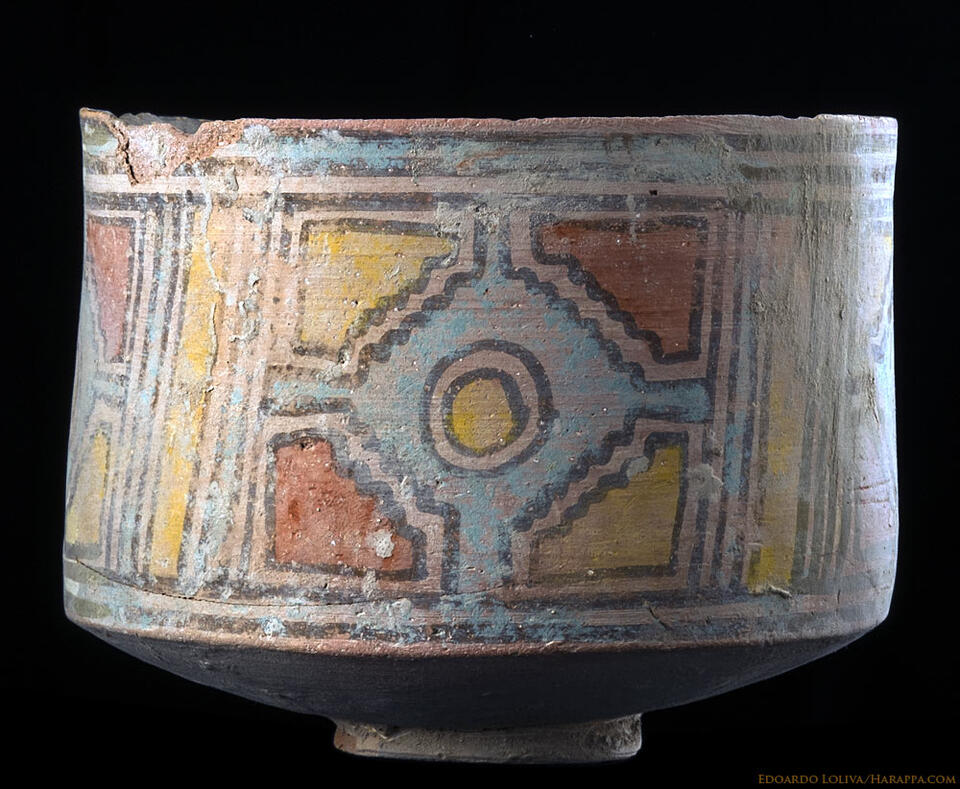A spectacular exhibition opened on June 24, 2014 at the National Museum of Oriental Art (MNAO) 'Giuseppe Tucci' in Rome, Italy. Living Symbols presented a group of painted protohistoric objects from the 4th and 3rd millennium BCE, illegally excavated in Balochistan and seized in 2005 by the Italian police. Although much about their provenance is lost, they are apparently from the little know Nal Buthi and Kulli cultures that preceded and accompanied the height of Indus culture. They used the zebu bull, pipal tree, tiger and other major motifs familiar to us from Harappa and Mohenjo-daro.
These are among the most splendid objects ever found from the area, and show how vibrant the use of color was even before the Bronze Age. They convey the sophistication of symbolism and art in the 4th and 3rd millenniums (4000-2000 BCE). The exhibition, organized by MNAO in collaboration with the Pakistan Embassy and with the support of Eural Gnutti s.p.a., represented a precious opportunity for a first encounter with the cultures that succeeded in Pakistan. Curated by Giovanni Lombardo (MNAO) and Harappa.com contributor Massimo Vidale (University of Padua, Italy).




